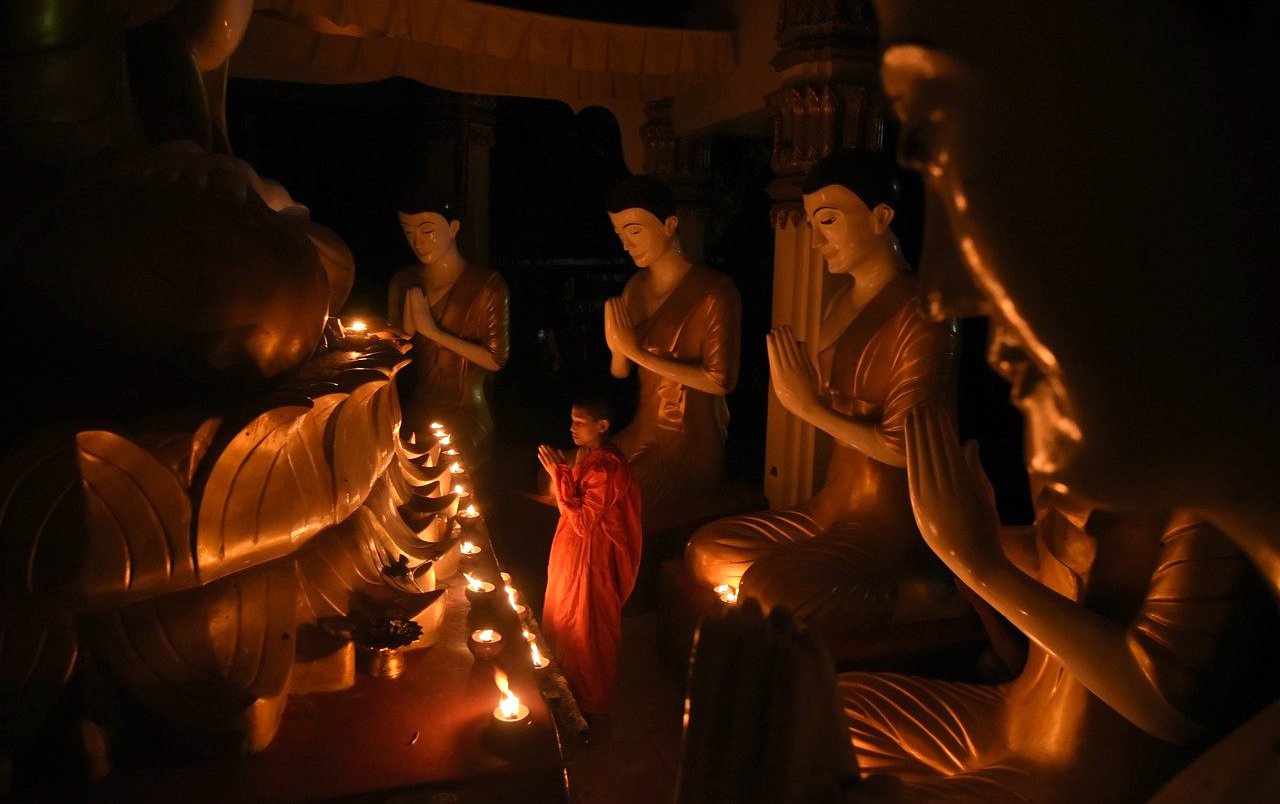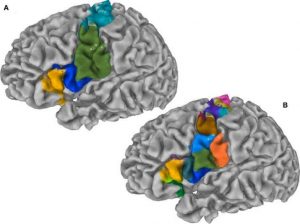
The second factor on the Noble Eightfold Path is called Right Thought, but a more effective translation from the original Pali might be Right Intention. The Buddha explains that Right Intentions are threefold: intentions of renunciation; intentions of good will; and intentions of harmlessness.
These three intentions are the opposite of the wrong intentions of desire, ill-will, and harmfulness. Just as thought is the forerunner of action, so right thought is the forerunner of right action. Similarly, suffering will be the result of wrong thought or wrong intention.
The Buddha has told us (Majjhima Nikaya 19) that while meditating prior to enlightenment, he found that his thoughts could be divided into two opposite classes. Whenever he noticed thoughts of desire, ill-will, and harmfulness arising, he replaced them with thoughts of renunciation, good will, and harmlessness. He understood that the former kinds of thoughts harm oneself and others and obstruct the path to wisdom. Hence, he developed the wisdom to eliminate the obstruction and open the path.
The influential Burmese monk Ledi Sayadaw (1846–1923) gives us an important insight when he writes that one may claim to be a Buddhist and even espouse right understanding, but that does not necessarily mean that one will put it into practice automatically. To know the good does not necessarily mean one will do it. Such a would-be Buddhist may still feel some enmity toward others and speak slanderously about them. All of one’s book learning will not change harmfulness into loving-kindness. Only actual application and practice can bring this about. As Ledi Sayadaw concludes: “This means hard work on oneself, which may be painful emotionally, but then the result of accomplishing just a little here is that one becomes a ‘solid’ Buddhist.” (Ledi 44)
The Buddha, at the time of his enlightenment, saw that everything contains its opposite. He saw the duality in nature. In a moment of insight, he realized that everything can be replaced by its opposite—that intentions of good will and harmlessness offer the antidote to aversion, ill-will, and suffering, He saw that thoughts of anger, hostility, and resentfulness lead to cruelty, aggression, and destruction, and that replacing intentions of harmfulness with intentions of harmlessness opened the path to wisdom. (Bodhi 33)
The Buddha once said that his teachings go contrary to the way of the world. The way of the world is one of unenlightened desire, of seeking happiness by seeking objects of desire, while imagining that the attainment of these objects will bring happiness and fulfillment.
The Buddha says the exact opposite of this: unfulfilled desire is the root of unhappiness and dissatisfaction, and the way to get rid of such suffering is to eliminate the craving or desire—to pull out the root of unwholesome desire through renunciation. Going against the stream, the Buddha flows the opposite way, breaking free of craving and finding happiness in a lack of desire.
The mind is in the habit of grasping. We have to break this habit and strive to let go of grasping. If we examine the root of desire and see the unhappiness to which it leads, we should, with effort and practice, eventually learn to resist and abandon desire. When we finally learn that freedom from the hold of attachment is the key to happiness, then we will be able to have our unwholesome desires under control, incrementally, one by one, and ultimately rise above the level of such base bondage.
This does not necessarily mean we should run off to a monastery and abandon the life of a householder. It means that each according to the level of our understanding and the power of our will should strive as best we can to eradicate the root of craving and rise above the suffering that it causes. It becomes a very personal and individual thing, and one makes progress only in accordance with the level of one’s understanding and determination. Another reason why it’s personal is that no one can make the effort for you. You must understand it and do it yourself.
It is one thing to know that one has to let go of attachment, but quite another to actually do so. The mind meets a powerful inner resistance. At first, it seems impossible to overcome this resistance through an act of will. This is sometimes called the problem of how to break the shackles of desire. Just to repress desires doesn’t work, because that only drives them below the surface to rise again at some other opportunity.
Another device the Buddha taught us is to subject desire to analytic investigation and observation. Instead of imagining the gratification of desire and the pleasure and happiness it would bring, we look realistically at the desire and the unhappiness that eventually follows in its wake. When we explore the roots and motives of our mental actions and observe that they do not lead to expected results, sooner or later we become wise to the truth of the matter and alter our behavior accordingly.
“When desire is scrutinized up close, we find it is constantly shadowed by dukkha.” (Bodhi 35) Dukkha in Pali means suffering or unsatisfactoriness. When we stop to think of it, the moment a desire arises, we sense a lack of fulfillment, an emptiness, a feeling of discontent. Wanting is just another form of pain that we would be better off without. When desire is not fulfilled, there is “frustration, disappointment, sometimes despair.” (Bodhi 36) Even fulfilled desire does not guarantee happiness. What if it does not last? What if we lose the object of desire? What happens when the gratification is over with? What will fill this void?
This is called grasping. Sometimes, when we hang on too hard, this becomes a cause of unhappiness. We must realize that the fulfillment of desire is impermanent, that nothing lasts, whether it be the height of sensual delight, or the achievement of wealth or fame or power. The pursuit of such pleasures brings the pain of separation from the object of desire, which increases in intensity in proportion to the degree of attachment.
References
Bodhi, Bhikkhu. 1984. The Noble Eightfold Path: The Way to End Suffering. Kandy: Buddhist Publication Society.
Ledi Sayadaw. 1977. The Noble Eightfold Path and its Factors Explained. Kandy: Buddhist Publication Society.












